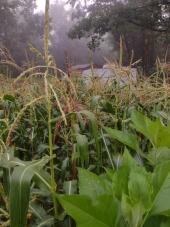

Anne Miller wrote:We use french drains in a similar fashion.
The french drains could be directed into swales.
Do you have a low area where it would be convenient to drain the water?
Rachel Lindsay wrote:People that I read about doing stuff like this also pay attention to creating swales and placing organic matter on land nearby for catching and holding water.
Have you thought of any water-loving plants you would place nearby?
I believe your very localized ecosystem there will probably undergo changes from even a very tiny pond being there, and ampohbious critters might show up in a couple years if it develops into a healthy micro-ecosystem!


Hans Quistorff wrote:Thank you for posting this project and adding to our knowledge base. please fallow up with results of the trial.

J Manszewski wrote:I think hosting classes are very valuable! Either online or in person. Charging for each event. I am too, from West Michigan, and there is little to none hands on classes for basic learning skills. Even simple as garden planning. Or hog butchering. Basic farm practices.

William Bronson wrote:Thank you for sharing this!
Can you tell us more about #10?
Specifically, are all three components fermented, and also, what kind of fermentation is happening?
I would expect yeasts and actobacter to dominate, but lacto fermentation is usually what is touted as best.
